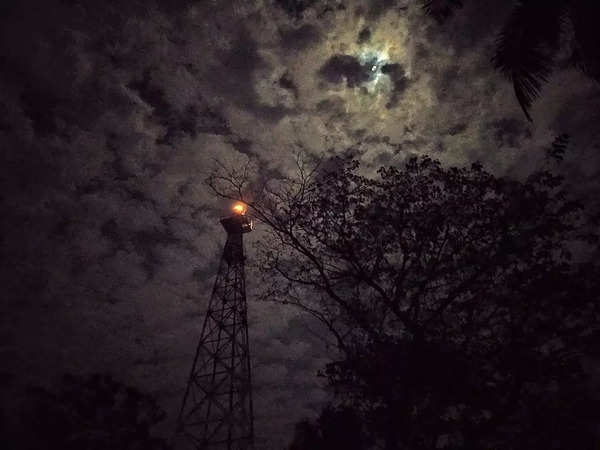St Martin’s Island, a small landmass of just 3 square kilometres, is located in the northeastern Bay of Bengal, approximately 9 kilometres south of the Cox’s Bazar-Teknaf peninsula, marking the southernmost point of Bangladesh.
Previously, Hasina had also accused the US of attempting to orchestrate a regime change in Bangladesh during a parliamentary session. Her son, Sajeeb Wazed Joy, suggested that the recent protests in Bangladesh were likely instigated by a foreign intelligence agency, although he refrained from explicitly naming the US. He stated, “I now firmly believe this was instigated by a small group, most likely by a foreign intelligence agency. I strongly suspect the ISI. There was no reason for the protests to continue because the quotas were not mandated by our government and were restored by a court ruling. Our government had lifted the quotas in 2018 or so when the first quota protests happened.” The United States government has consistently criticized Dhaka’s human rights record and electoral processes.
What’s the significance of St Martin’s Island?
A vessel leaving St Martin’s Island
Covering just three-square kilometres, the island is home to around 3,700 residents who primarily engage in fishing, rice cultivation, coconut farming, and seaweed harvesting, which is dried and exported to Myanmar.
Recently, the island gained attention due to allegations that the Bangladesh Nationalist Party (BNP), led by former Prime Minister Khaleda Zia (who was recently freed), had planned to sell it to the United States for the construction of a military base in exchange for electoral support. However, the US State Department dismissed these claims, affirming its commitment to respecting Bangladesh’s sovereignty and promoting democracy through free and fair elections.
History of
Known as ‘Narikel Jinjira’ or Coconut Island in Bengali, due to its abundance of coconut trees, St Martin’s Island is also referred to as ‘Daruchini Dwip’ or Cinnamon Island. The island was originally part of the Teknaf peninsula but was separated when a portion of the peninsula submerged, transforming the southernmost part into an island.
The island has a rich history dating back to the 18th century when it was first settled by Arabian merchants who named it ‘Jazira’. In 1900, a British land survey included St Martin’s Island as part of British India, naming it after a Christian priest called Saint Martin. Some reports suggest that the island was named after the then Deputy Commissioner of Chittagong, Mr Martin.
In 1937, when Myanmar was separated from British India, the island remained part of India. Following the Partition of 1947, it came under Pakistani control and later became part of Bangladesh after the Liberation War of 1971. In 1974, Bangladesh and Myanmar reached an agreement, affirming the island as Bangladeshi territory.
Maritime tussles with Myanmar
Despite the 1974 agreement recognising St Martin’s Island as part of Bangladesh, there have been ongoing issues over the delimitation of the maritime boundary. Bangladeshi fishermen, who use the island as a major fishing hub, have faced detentions and warning shots from Myanmar’s naval forces. Although the island’s ownership has not been disputed, the maritime boundary’s delimitation has created tensions, given the island’s strategic location near the Bay of Bengal.
In 2012, the International Tribunal for the Law of the Sea (ITLOS) delivered a landmark judgment affirming Bangladesh’s sovereignty over the island. This ruling had significant implications for Bangladesh’s territorial waters and its Exclusive Economic Zone (EEZ).
Rohingya influx into Bangladesh
The violent military crackdown in Myanmar in 2017 forced over 700,000 Rohingya Muslims to flee into neighbouring Bangladesh, with many seeking refuge in the Kutupalong camp in Cox’s Bazar, the world’s largest refugee camp. Given its proximity to St Martin’s Island, there have been reports of the Arakan Army, a group banned by Myanmar, attempting to stake a claim on the island, though Bangladesh has consistently denied these claims.
Sporadic incidents of gunfire between Myanmar’s junta and the Arakan Army have occurred in recent years, prompting the Bangladeshi Navy to deploy warships around St Martin’s Island.

Light house of St. Martin’s Island
US-China Tussle
St Martin’s Island has played a significant role in Bangladesh’s politics since the country’s independence in 1971. Its strategic location near the Bay of Bengal and its maritime boundary with Myanmar have attracted international interest, particularly from the US and China, both seeking to strengthen their presence in the region.
In June last year, Prime Minister Sheikh Hasina alleged that the US had intended to acquire St Martin’s Island to build a military base in exchange for BNP’s electoral victory. She claimed that the BNP, if brought to power, would sell the island to the US, a step she vowed never to allow while in office.
Her allegations were strongly refuted by US State Department spokesperson Matthew Miller, who stated that the claims were “not accurate” and affirmed that “no discussions” about taking over the island had occurred with the Bangladeshi government.
With inputs from agencies
